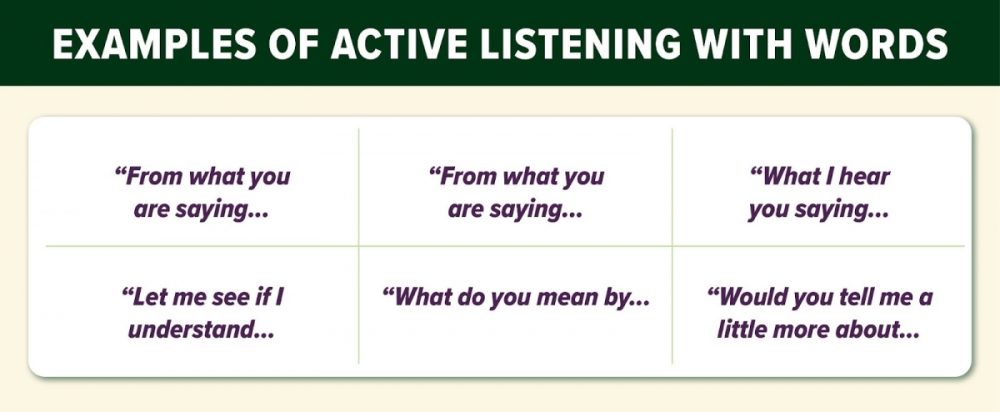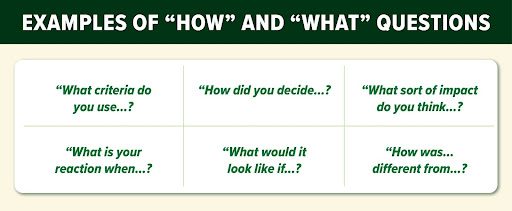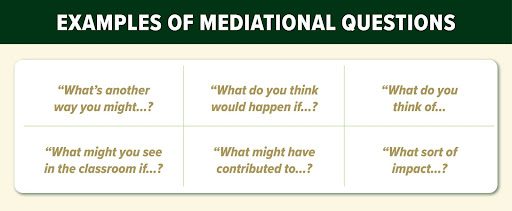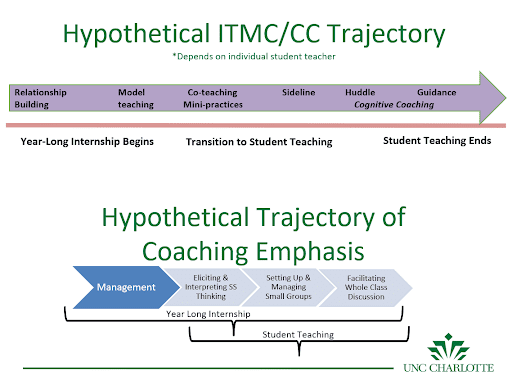Module 3: Effective Feedback and Coaching
Working with Adult Learners
Understanding the differences between young learners and adult learners is critical for helping your teacher candidate grow, learn and reach individual goals.
Malcolm Knowles was the foremost proponent of adult learning in the United States. He advanced the theory of “andragogy,” or the methods of adult learning. Knowles believed that the skills involved in adult education were distinct from those used in pedagogy. Knowles suggested that the same methods for teaching children do not apply to adults.
Although your teacher candidate is an adult learner and comes to your classroom with many life experiences, they are still new to the teaching profession. Teacher candidates will need support and guidance as they begin to develop and practice teaching skills. It is imperative that you do not make assumptions about what your teacher candidate knows or that the teacher candidate has a solid understanding of basic teaching skills.
IMPORTANT!
Try to stay mindful of high expectations. As an experienced teacher, the clinical educator can often make teaching look very easy. This can be challenging for a teacher candidate who tries to replicate what the clinical educator is doing only to find that things don’t go nearly as well. Many novice educators have very high expectations for themselves and struggle with their early results in the classroom. It is also possible for us, the experienced teachers, to set our expectations too high for someone just beginning in the classroom.
It is important to remember that teacher candidates have a lot to learn during their time with you. We encourage high, but reasonable expectations, as they are not even first-year teachers yet!
FEEDBACK TO YOUR TEACHER CANDIDATE
It is important for a Teacher Candidate to receive and implement feedback. Every professional’s performance is evaluated in some way. It is imperative that a Teacher Candidate be provided the opportunity to receive this type of feedback from the start. More importantly, feedback lays the groundwork for the improvement of teaching skills. A Clinical Educator who can provide specific feedback helps Teacher Candidates reach their full potential. Many Clinical Educators are hesitant to give feedback or to say anything critical, fearing that the Teacher Candidate will be discouraged. However, feedback is important to correct habits or teaching behaviors that can lead to failure. The Clinical Educator must be honest with the Teacher Candidate and not hesitate to give a true appraisal of the performance. Teacher Candidates are novice teachers who need guidance from experienced teachers through constructive criticism. It is also important for the Clinical Educator to tell the candidate whatever he or she is doing well, to give praise when it is due, and to commend innovation and creativity while also addressing areas that need improvement.
EFFECTIVE FEEDBACK VS. LESS EFFECTIVE FEEDBACK
Feedback:
“Do you remember what happened in class when ____?” “What effect did that have on student learning?”
Why was it effective?
This statement probes the teacher candidate to reflect on his/her own teaching. It also allows the clinical educator and teacher candidate to have an open discussion
Feedback:
“The students were confused with the lesson today. You need to work on your planning.”
Why was it less effective?
This is a very vague statement about the teacher candidate’s performance. The teacher candidate may be left confused after receiving this feedback. Be very specific with feedback and provide tangible examples.
Feedback:
“We have had the opportunity to talk about the strengths in your lesson today. Now I want to discuss two areas on which we should focus on for continued growth.”
Why was it effective?
This feedback is very concise and specific with 2 points of focus. More than 2-3 points of focus can be overwhelming for a teacher candidate
Feedback:
“The students were bored today. You need to be more engaging. I have taught this lesson many times and the students like the interactive game I have created.”
Why was it less effective?
Feedback should be centered around the teacher candidate’s performance and encouraging the teacher candidate to reflect on his/her own teaching to come up with a solution. Give the teacher candidate a specific example and pose reflective questions.
FEEDBACK LANGUAGE
Your Teacher Candidate wants your feedback. They know that if they listen to, and take action on, clear and constructive feedback, their overall performance will improve. When feedback is given in the right way and with the right intentions, it can lead to outstanding performance. For your teacher candidate to really hear your thoughts and suggestions, though, that feedback has to be delivered in the right way. Listed below are three tips with language examples for providing feedback that is powerful and positive.
Active Listening
Active listening involves repeating what you have heard in your own words until you are sure that you have indeed heard it fully and accurately. It also includes asking your teacher candidate if they have been heard. Active listening is a good habit because it shows empathy and respect, allows for the most accurate information exchange, and, most importantly, encourages you to stay in a stance where the answers come from the teacher candidate.

Use “How” and “What” Instead of “Why”
Asking “why” often implies judgement. As adult learners, your teacher candidate is able to self-assess and will often recognize and correct missteps on their own. In many cases, simply making some non-judgemental responses helps the teacher candidate come to the “solution” on their own. Additionally, non-judgemental responses help communicate that you are open-minded, encouraging, and interested.

Ask Mediational Questions
Mediational questions help bring about a new understanding by posing questions that extend thinking, learning, and planning. They help the teacher candidate make hypotheses and think outside the box.

HOW TO SHARE EFFECTIVE FEEDBACK:
When sharing feedback it is important to be very strategic. You will want to share the feedback during your post conferences. The steps listed below will allow the Teacher Candidate to become aware of any challenges, see the action step broken down into steps and practice before applying.
BEST PRACTICES FOR SHARING FEEDBACK
- Identify highest leverage action step to correct a challenge
- Model the action step (CE models, Watch a video, etc.)
- Give bite-sized and observable action steps with a what and how
- Plan, Practice, Follow Up
Additional Resources for Feedback:
GBF – Scope and sequence
COACHING YOUR TEACHER CANDIDATE

UNC Charlotte has a strong belief in coaching based on research that shows the positive impact of coaching on the teaching and learning process. The research conducted by the Annenberg Foundation for Education Reform show that coaching 1) Allows teachers to apply their learning more deeply, frequently and consistently 2) Supports teachers to improve their capacity to reflect 3) Is linked to teachers increase in using data to inform practice (Annenberg Foundation for Education Reform, 2004).
Additionally, we know that effective coaching and descriptive feedback increases effectiveness in teachers (Showers and Joyce, 2002). As a result, we have incorporated coaching strategies as a critical piece of the intensive support offered to Teacher Candidates by our Clinical Educators and Faculty Site Coordinators.
What is in-the-moment coaching?
Coaching your teacher candidate in-the-moment requires you to be a keen observer of what is taking place in the classroom while the teacher candidate is leading (whole group, small group, management, etc.). In-the-moment coaching is more informal and spontaneous and is used to either reinforce a positive behavior or prevent undesirable behaviors.
Why is In-The-Moment Coaching Important?
In-the-moment coaching offers immediate feedback when the teacher candidate makes an error and gives the candidate the opportunity to correct the error immediately. The reflection process starts immediately. In-the-moment coaching also emphasizes a positive behavior to be used again in the future.
In education, teacher candidates get one year to receive support and instruction that is appropriate to becoming a beginning teacher. Having a mentor professional work side-by-side is critical for the growth of each teacher candidate.
Things to consider for In-the-Moment-Coaching:
- Explain in-the-moment coaching to your teacher candidate (what it looks and sounds like). Be sure that you both have a clear understanding.
- Determine appropriate in-the-moment coaching techniques for your teacher candidate (cues). Determine “interruption” signals that you are both comfortable with in the classroom.
- Have a pre-conference with your teacher candidate to discuss in-the-moment teaching techniques and how they will be used in the classroom.
- Frequently discuss with your teacher candidate which strategies work best and ways to adjust things to make in-the-moment coaching meaningful and effective.
In-The-Moment Coaching Strategies:
- Sideline
- Video Example Using Signals
- Video Example Using a Whiteboard
- Use hand gestures or provide written feedback (whiteboard, iPad, coaching card, sticky note, text, etc.) for the ST to see and immediately respond to throughout instruction.
- Huddle
- Video Example of a Huddle
- When students are working in groups, transitioning, or working independently, pull the ST to the side and whisper brief feedback and/or game-plan for next moves.
- Guidance
- Video Example of Guidance
- Addresses a short question or statement to the ST and/or class to help guide them in-the-moment.
- Co-Teaching/Modeling
- Video Example of “tag in”
- ST stops during instruction and asks the CE to “tag in” for the moment or CE uses a cue to signal “tag in”.
- Real Time Coaching
CE and ST use earpiece/cell phone with one headphone in ear. CE provides directive conversation/coaching to ST during the lesson. Can be used for instructional purposes, classroom management purposes, or both.
Please note that not every in-the-moment coaching strategy will work for every teacher candidate. It will be important to communicate with your teacher candidate to find the strategies that work best for both of you. After implementing an in-the-moment coaching strategy, work with your candidate to reflect on the coaching session.
After coaching your teacher candidate in-the-moment you might ask…
- How did that make you feel?
- Was this coaching strategy that helpful?
- What could I do differently to support you?
- Do you feel this strategy helped you reach your goal?
Additional Resources:
Coaching Stems – General Coaching Sentence Stems/ Facilitative and Directive Coaching Stems
Elena Aguilar, The Art of Coaching: Effective Strategies for School Transformation. Jossey-Bass, 2013.


